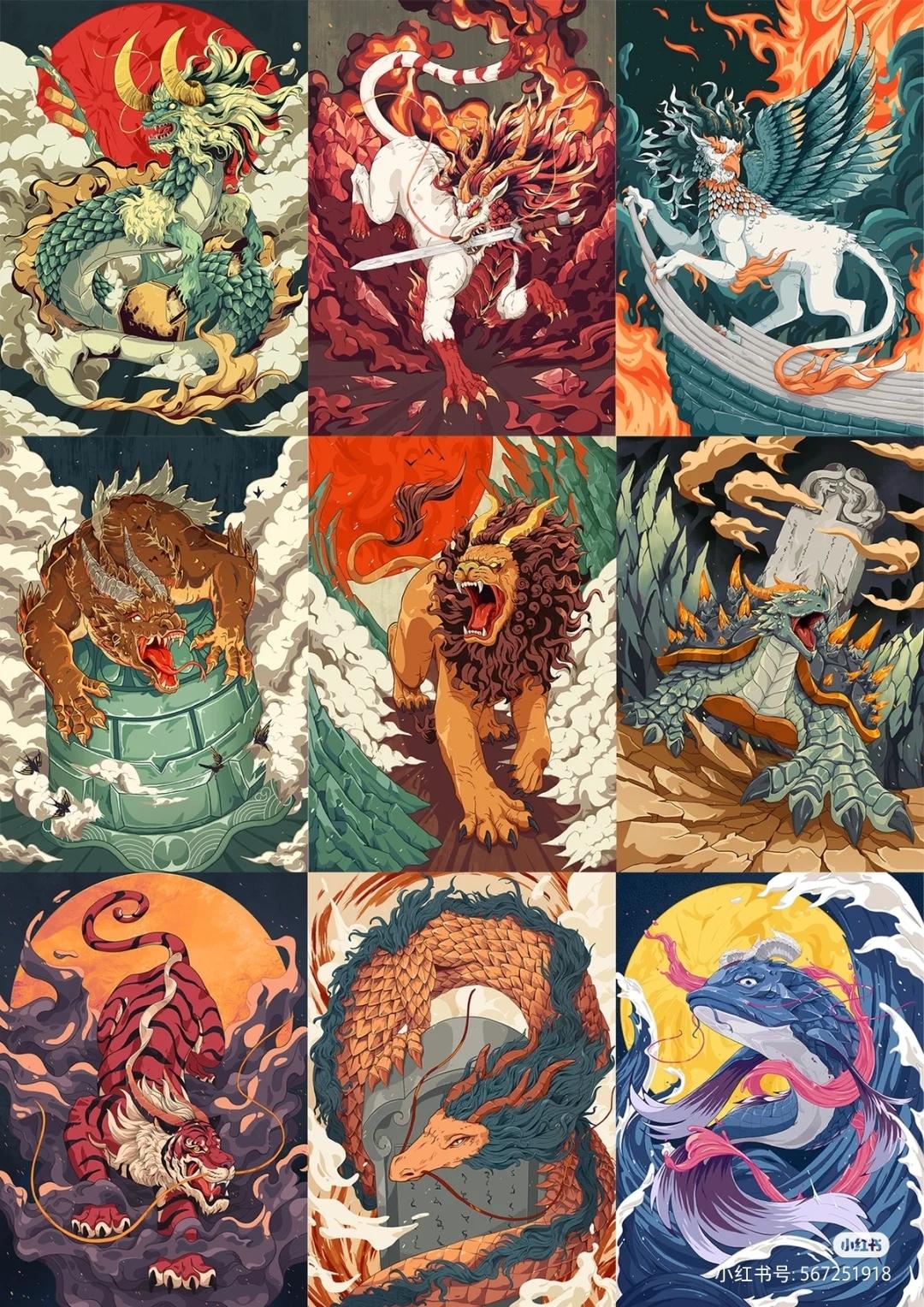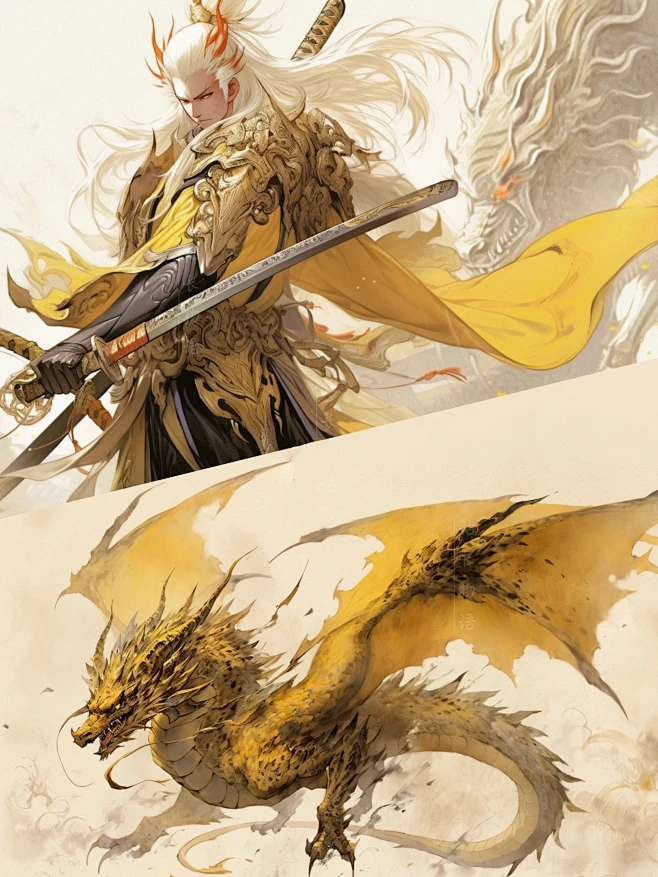China has a mythology of the nine sons of the dragon. Each son has a different appearance and personality.
In general, there are two versions of the nine sons of the Chinese dragon recorded in ancient texts. Each version will have a few different sons and their order will also be different.
In the first version, the nine sons of the dragon will include: Qiuniu, Yazi, Chaofeng, Pulao, Suanni, Bixi, Bi’an, Fuxi, Chiwen.
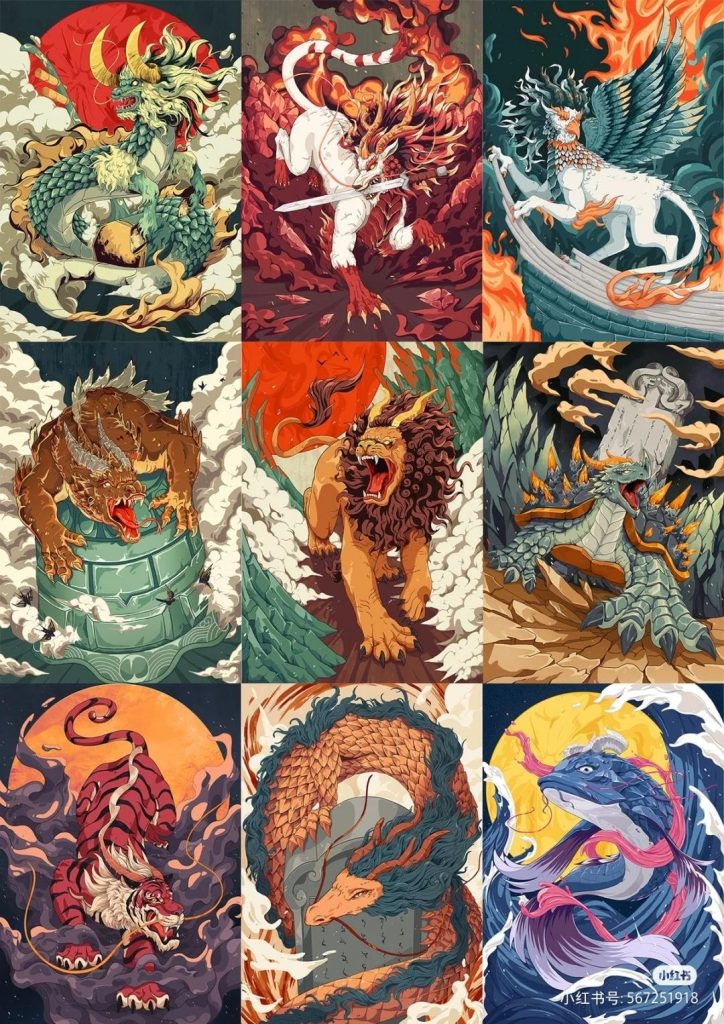
In the second version, the list will be: Bixi, Chiwen, Pulao, Bi’an, Taotie, Gongfu, Yazi, Suanni, Jiaotu.
Therefore, I will introduce to twelve creatures after combining both lists above.
#1 Qiuniu
In Chinese mythology, Qiuniu emerges as the gentlest of Dragon children. Unlike most of its siblings, Qiuniu finds joy not in battle, but in the harmony of music.
Legends tell of it perching atop the smooth wood of the Hujin, bathing in the melodies that flowed from its strings, its very image forever etched upon the instrument’s head.
#2 Yazi
Born of a dragon and jackal, Yazi possesses the body of a jackal and the head of a dragon.
Ancient books record that it was bloodthirsty and fond of fighting. His fangs dripped with anticipation as it gripped a sword tight in his jaws, his eyes burning with merciless fervor.
Yazi’s image adorned weapons and armor, striking fear into the hearts of the enemies and inspiring unwavering courage in warriors.
#3 Chaofeng
Chaofeng is a hybrid of a phoenix and a dragon.
It likes to adventure and is often placed on the four corners of roofs, to protect buildings from evil influences.
#4 Pulao
Pulao lives by the sea in ancient legends.
Although he is the son of the dragon, he has always been afraid of the huge whale. When the whale attacks, it roars in fear. It is said that its roaring voice is very loud, so the ancients often cast the image of Pulao on the bell.
#5 Suanni
Suanni is a hybrid of a lion and the Dragon that finds peace in stillness and often sits still watching the incense smoke rising, so it is cast as a decoration on agarwood burners, implying the desire for the fragrance of agarwood to always shine.
#6 Bixi
In ancient Chinese legends, Bixi, known for its immense strength, often stirred up trouble by carrying mountains on its back.
Subdued by Yu the Great, it later made great contributions to his flood control efforts. After their success, Yu the Great commissioned stonemasons to craft a stele celebrating Bixi’s achievements, which was then placed upon its back.
Hence, Bixi is often found carrying grave monuments or stone tablets, symbolizing longevity and stability.
#7 Bi’an.
Bi’an resembling a tiger, with long, sharp fangs, and great visual power, likes justice and has the talent to argue for fairness when there is injustice.
So, it is often placed at the door of a prison or a dharma hall, implying a deterrent to criminals and reminding people to live honestly.
#8 Fuxi
Fuxi has an elegant appearance.
Fascinated by the beauty of the inscriptions on the epitaphs, Fuxi often curled up on the stele and admired it. Therefore, when decorating stone steles, people often engrave a pair of well-balanced Fuxi on its top.
#9 Chiwen
This dragon son takes the form of a fish-like creature with a raised tail.
Chiwen is said to have a deep understanding of water and wind, and its image is often found on rooftops and corners of buildings to ward off evil spirits and regulate the flow of energy.
#10 Taotie.
“Classic of Mountains and Seas” introduces Taotie characteristics as follows: shaped like a sheep’s body, human face, underarm eyes, tiger teeth, and human hands. It was commonly emblazoned on bronze and other artifacts during the 1st millennium BC.
In Chinese mythology, Taotie is one of the “Four Perils” that includes Hundun, Qiongqi, Taowu, and Taotie.
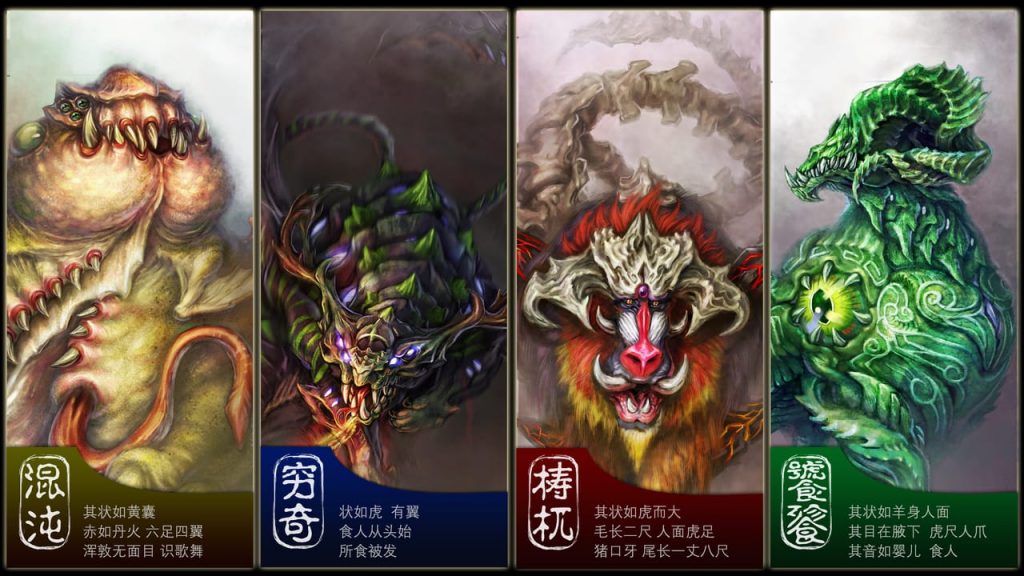
#11 Gongfu
Gongfu’s head is a bit like a dragon, but it is flatter than the dragon’s head, and there is a pair of horns on the top of the head. It has dragon scales on the body, four legs, and a tail.
People said Gongfu can calm the river, prevent floods, and hold a lot of water in its belly. Because of this, it is placed at the head or body of the bridge or used as a drainage outlet in buildings.
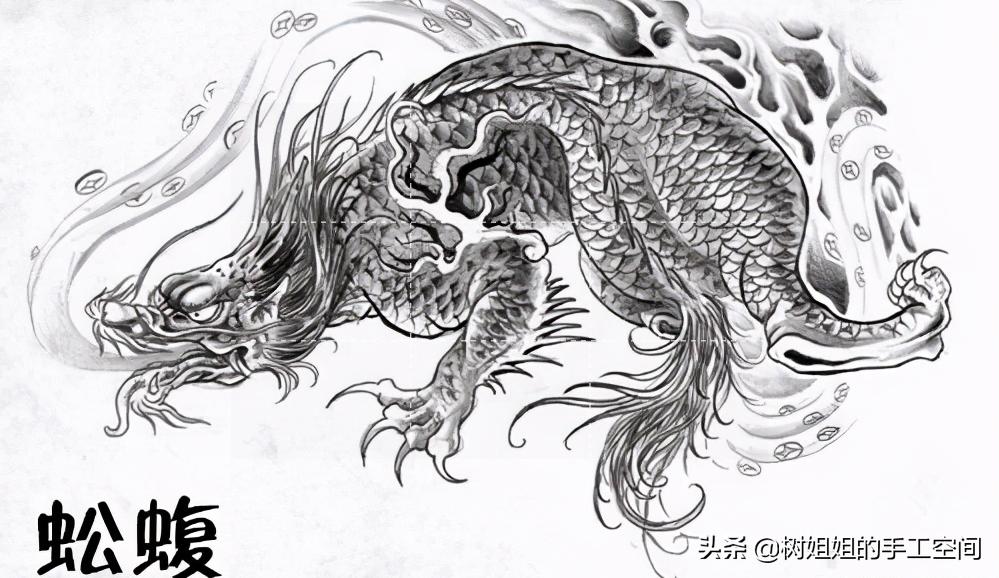
#12, Jiaotu
Jiaotu, a dragon son resembling a conch or clam, dislikes disturbances and favors secrecy. It is often engraved on doors or adorns door handles, symbolizing privacy, keeping the homeowner safe, and preventing evil demons or unwanted intruders.

Conclusion
These are just some of the many stories and interpretations associated with the nine sons of the dragon. Their enduring popularity is a testament to the rich imagination and cultural significance of Chinese mythology. Would you like to know more about the dragon in Chinese mythology?
